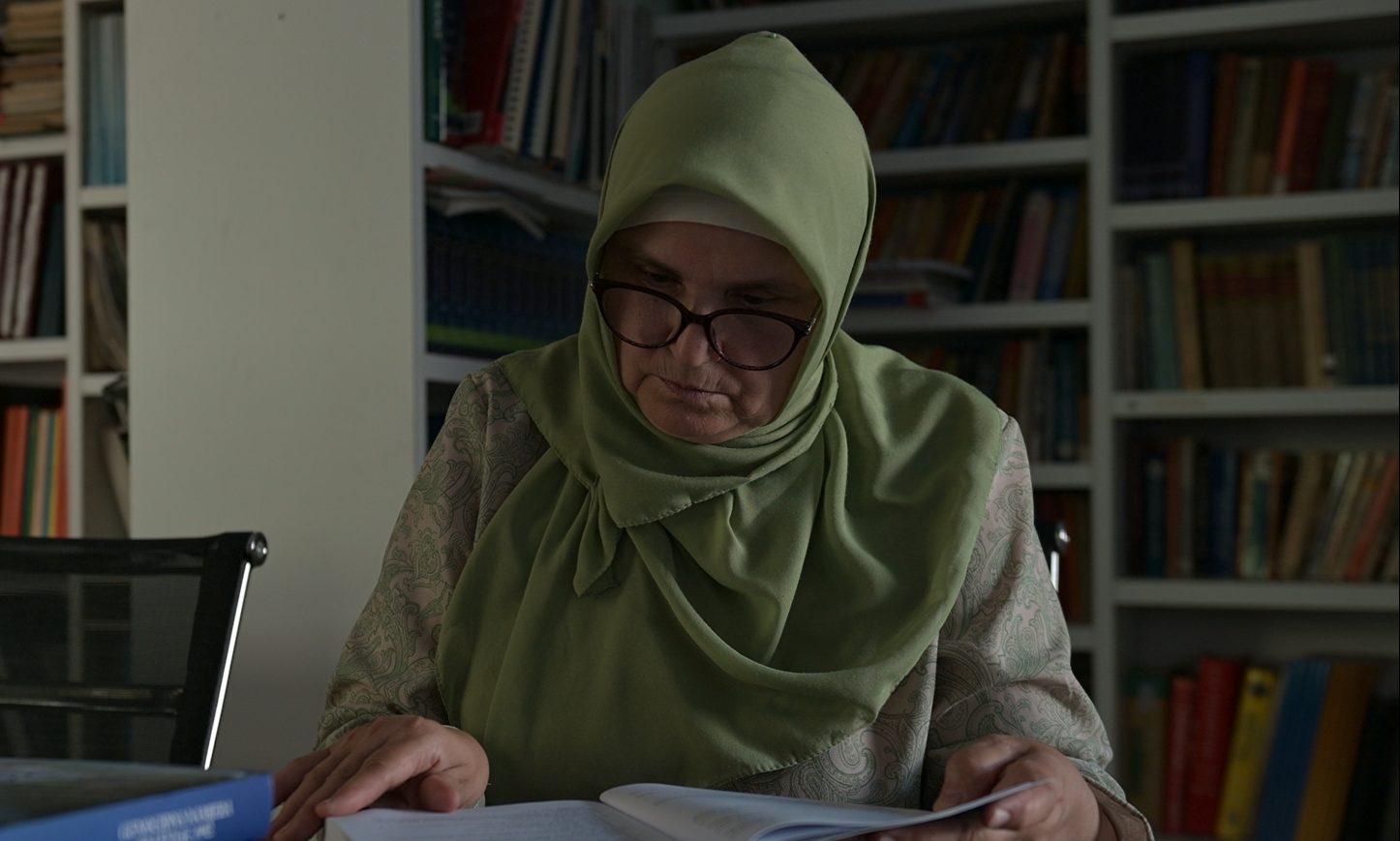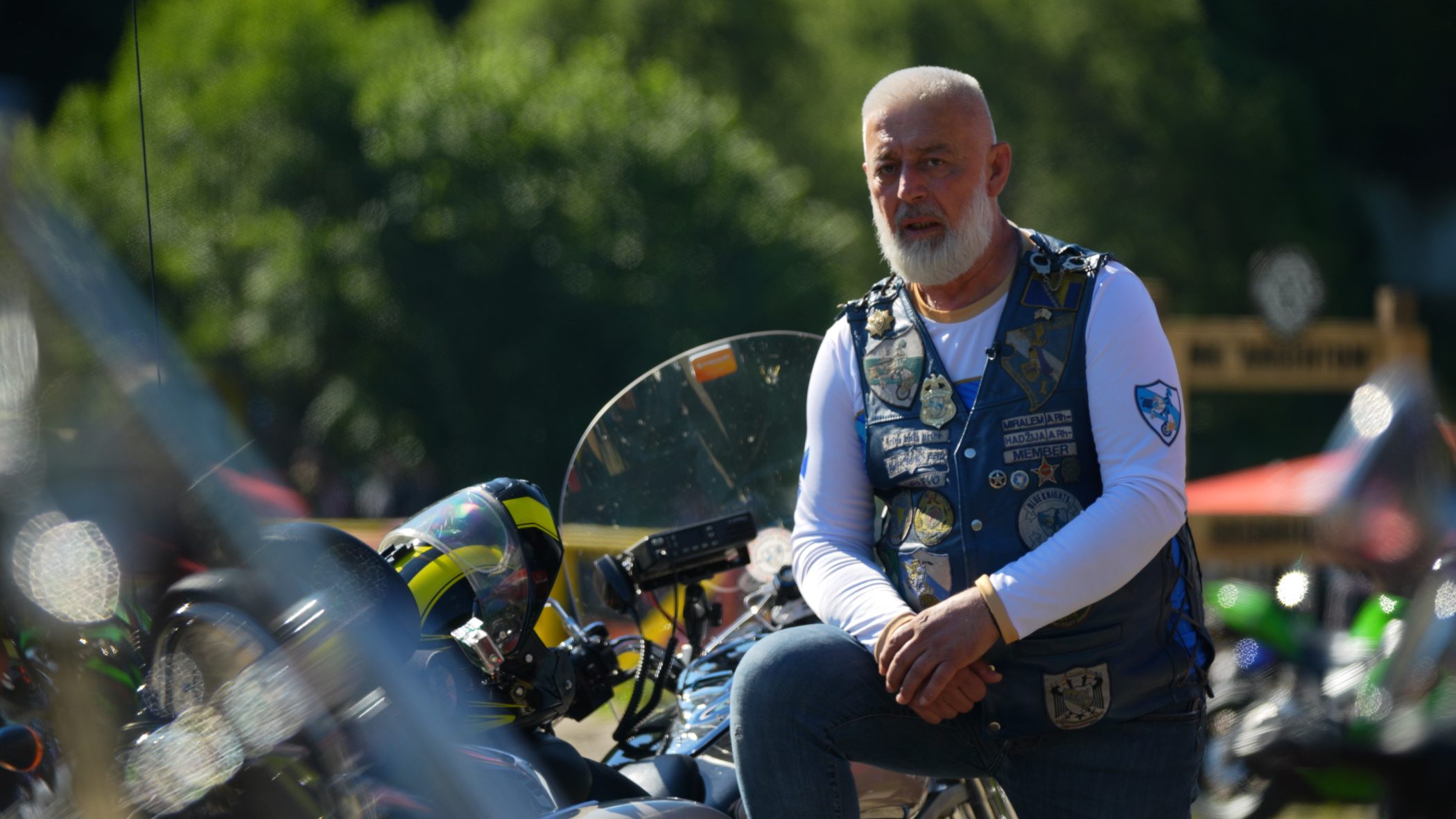This post is also available in: Bosnian
His brother was killed at the age of 16. Later, Hodzic started searching for photos of his murdered sibling – a quest that developed into his online photo compendium of wartime pictures, Sniper Alley.
Now a father of six, Hodzic told Detektor that gathering the photos for Sniper Alley meant he had to immerse himself in images of the dead and pictures of wartime horrors and crimes. However, he felt that he was fulfilling an important mission by preventing memories from disappearing.
“Working on the project, I am serving my community. Working on some other cases of injustice and oppression, like in Gaza, Ukraine or Burma, I feel I am helping them in any way I can just like someone helped us at some point,” Hodzic said.
As a video editor, he has worked on many documentaries about wars and atrocities, and continues to do so. His topics range from a massacre in India in 1987 to last year’s assault on the Shifa hospital in Gaza, violence in the West Bank and “the injustice suffered by Palestinians from settlers and the military regime”.
He recently finished several films for the Sniper Alley project featuring photographers who were in Bosnia and Herzegovina during the war and also in Gaza or other conflict zones describing their experiences.
In his video series entitled The Story Behind the Photo, some of them talk about why photographs from war zones are so important.

Greek photographer Dimitri Messinis says it gives him great pleasure to talk about his wartime experiences, in particular what he experienced in Bosnia and Herzegovina.
Messinis has been photographing conflicts for almost 30 years – in the West Bank and Gaza, Bosnia and Herzegovina, Croatia, Kosovo, North Macedonia, Lebanon, Iraq, Afghanistan and Yemen.
“A war, in whatever country it takes place, is the same, with few differences. It is the curse of the human species,” Messinis told Detektor.
He said that the siege of Sarajevo was very difficult for him, but wars always evoke the same sensations in people who experience them – terror, panic and despair.
“The most significant thing is that they remain deeply ingrained in you. There are too many scenes to enumerate and I try hard to remember them with as little intensity as possible, but we must not forget them. Forgetfulness is a crime,” he said.
In the latest published episode of Hodzic’s video series, Spanish photographer Enric Martí speaks about his experience in besieged Sarajevo and the photographs he took when a boy called Nermin Divovic was killed.
After leaving Sarajevo, Martí reported on wars, hunger and earthquakes for many years, and was in Egypt, Iraq, Rwanda and Kosovo, among other places.
“On a personal level, nothing was like covering Sarajevo for a very simple reason – I had a connection with the people here that did not happen anywhere else,” he said.
The importance of photographs for survivors

During the war in Bosnia and Herzegovina, many families lost all the photographs they had of their loved ones. Some of them regret this more than anything else, because were left without personal mementoes of a harmonious life before the war or, in some cases, any photo at all of family members who were killed in the war.
Watching footage from Palestine or Ukraine, those whose job is to record the horrors of war with their camera replay scenes in their head that they have witnessed over the years in other wars in places like Bosnia and Herzegovina. At times, their photos are the only proof of crimes and an important tool for fighting denial. In whichever war they were taken, they depict agony, pain and suffering. Photos of war victims are also of immeasurable significance to their families.
“I’m telling their story and I see myself and I feel like I’m telling my own story, about me and about my brother who was killed. I am every child in Gaza. Every photo is a link, every frame, the sounds of screams or the roar of the shells – everything reminds me of us and of the pain and suffering and the ordeals we went through,” Hodzic said.

If someone gives you a photo when you didn’t have one – particularly if it depicts a loved one who is no longer alive – it’s a really important feeling, he continued.
“All of a sudden you have something you have never seen before and only then do you learn its real value. I remember looking at Amel’s photo for the first time. I didn’t even know existed. I was transfixed. It was as if somebody had brought him back to life. can’t be described, it’s more than life itself,” Hodzic said.
Messinis said that in 2022, a comment was posted under photo of him that was published on Instagram on the 30th anniversary of the beginning of the siege of Sarajevo that said: “This is me with my mum!!!”
He explained that the photo showed a three-year-old girl in her mother’s arms waving to someone and crying. The mother and child were inside one of several buses that were evacuating women and children from Sarajevo.
“Surprised, I answered the message and the woman now explained to me that she realised that this tearful look was her last look at her father who was killed a few months later,” he said.
Messinis said that they got in touch by phone and a few months later, she was a guest at an exhibition he organised to mark 30 years since the beginning of the siege of the Bosnian capital.
“I hope that at some point I will be able to come to Sarajevo because I have to meet other friends who I stay in touch with – we have many memories to share,” he said.
‘The world must know what is happening’

Photographs, videos and reports from war zones are of great importance, not only to familiarise the public with what is happening, but also as potential evidence at war crime trials.
“The most important part of my job is to collect information and share this information, keep as evidence in some cases, or keep them as documentation for later on,” Italian photojournalist Enrico Dagnino explains in the first episode of Hodzic’s video series.
Ed Vulliamy, a British journalist who was the first to reveal to the world the existence of the Omarska, Keraterm and Trnopolje wartime detention camps in Prijedor, also testified in war crime trials at the Hague Tribunal. Pictures taken by US photojournalist Ron Haviv during the war in Bosnia and Herzegovina made headlines worldwide and were also used in court proceedings.
For Messinis, photographs from Ukraine and the Palestinian territories bring back the memories and affect him just like anyone else, he said.
“You cannot stand cold and silent in front of images of dismembered bodies of innocent children. The longest siege in modern history was that of Sarajevo, during which we had 11,541 dead civilians in four years. We had the same number of dead civilians in Gaza during the first months of the siege alone, and the death toll is increasing at an inordinate rate,” he said.
In the third episode of Hodzic’s video series, photographer Christopher Morris recalls a massacre in Alipasino Polje neighbourhood of Sarajevo in January 1994, when six children were killed and two others were injured. In his emotional testimony, Morris said that this was his breaking point, and that Time magazine actually pulled him out of Sarajevo afterwards.
He recalls how he went to the morgue, stood over the bodies and took portraits of the dead children, even a boy without a face. He said he knew no one was going to see those pictures, because they could not be published.
“Now I know what PTSD is. Here, it was on every corner, in every neighbourhood. And the world let it go on for five years. It’s criminal,” he says in the video.
Messinis said he would do the same work all over again if he had the chance.
“I believe that with our work, each of us is recording a small piece of contemporary history. We have to be there because the entire world has to know what is going on and so the truth isn’t hidden behind politeness and politically correct speech,” he said.

When the war in Ukraine began, the first thing that occurred to Hodzic was to archive material in a way that would make researchers’ and war crime tribunals’ jobs easier in the future.
“I compared it to our war and to whatever I’m now lacking in order to make up a complete picture of some of the incidents and the crimes. I’ve got lots of suggestions to make, I think I would be of great help. To be honest, I’ve not seen anything like this in Ukraine or Palestine, perhaps because those wars are still ongoing and the outcome is not clear and there’s no clear aim,” he said.
Hodzic thinks that because Gaza and the Palestinians are a vital contemporary issue, they’ve again demonstrated the importance of this type of work with photography, as well as the culture of remembrance and the archiving of material.
“We all know what is happening in Gaza, what Russia is doing in Ukraine – we have pictures, video material, analyses, we have evidence. Despite this, the other side that’s denying it all. No matter how hard you try and work, there are always people who will deny all that and question it,” he said.
That’s why photographers, journalists, videographers and other media workers simply must not give up because “hate and revisionism will eat you up”, he argued.
“The truth must be told, shared and repeated, and it should constantly be noted that evil is lurking everywhere, waiting for you to doze off. It’s not for nothing that they say silence is approval and sometimes even complicity,” he concluded.

